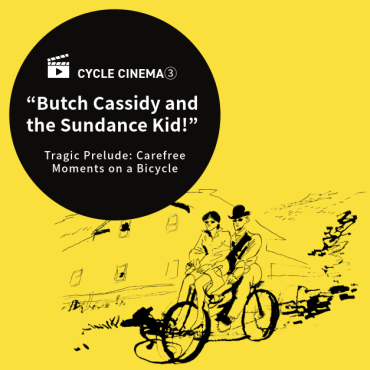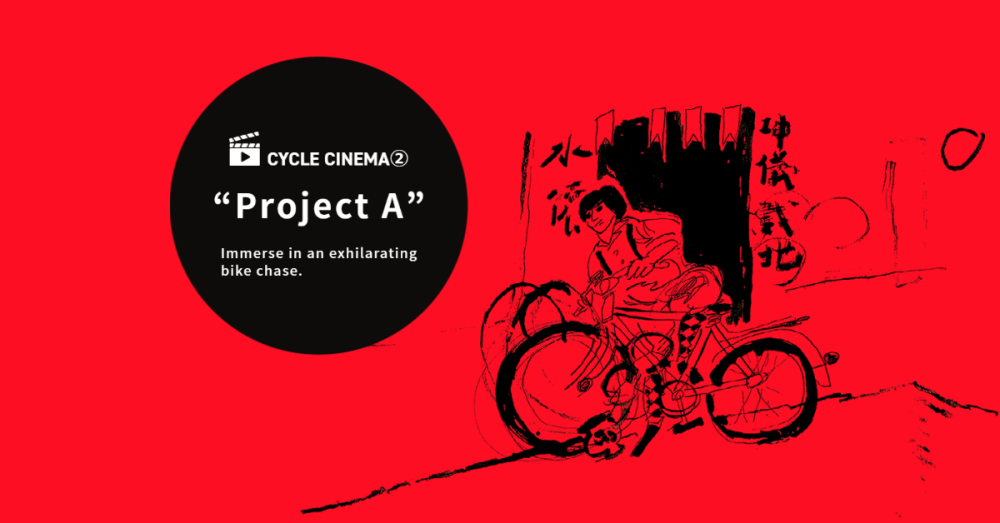
“Shoot for tomorrow!”(origin title “Butch Cassidy and the Sundance Kid”)
Tragic Prelude: Carefree Moments on a Bicycle

In the early 1990s, China had a completely different landscape compared to today. During the morning and evening rush hours, one could witness the famous “bicycle rush hour” that was synonymous with China at the time. Many people used bicycles for commuting, creating a breathtaking sight of thousands of people riding the same roads. Moreover, since most bicycles were of the same model and color, there was a sense of harmony. Brands like “Fenghuang” and “Yongjiu” from Shanghai were quite popular. These bicycles were tough and sturdy, serving as the essential means of transportation to support people’s daily lives.
Indeed, bicycles played a significant role in Hong Kong films of that era. They must have been a familiar mode of transportation for the people. One of Jackie Chan’s masterpieces, “Project A” (1983), also featured memorable bicycle scenes.
“Project A” is set in British-ruled Hong Kong, where the police, including Jackie Chan’s character who is part of the Marine Police, are ordered to eliminate pirates. However, they end up teaming up with a cunning thief (Sammo Hung Kam-Bo) to embark on a pirate-busting mission, making it an unbeatable “entertainment” film.
When Jackie is captured by the rival Land Police, he manages to escape by stealing a bicycle. This marks the beginning of a thrilling bicycle chase, with the pursuing police also on bicycles. Jackie navigates through narrow alleys of the old town, using bamboo sticks and ladders as weapons and even employing the bicycle itself to fend off the police, ultimately outwitting them and making his escape.
The scene, lasting only about 3 minutes, is so addictive that you can’t help but watch it repeatedly. Even when revisiting it now, it evokes elements of Chaplin and Keaton’s comedy, combined with precisely calculated timing and breathtaking parkour stunts that leave you in awe.
Back in those days, many children in Asia probably got hurt trying to imitate the action. While we can’t imitate car stunts (that would be illegal), we can certainly try to imitate the bicycle action. These childhood memories might have had an impact on our love for bicycles. When riding through narrow alleys on a bicycle, those joyful memories from the past suddenly come rushing back.

🎬CYCLE CINEMA STORAGE🎬
#01 “The Bicycle Thief”
#02 “Project A”
#03 “Shoot for tomorrow!”(origin title “Butch Cassidy and the Sundance Kid”)
#04 “The Kid With a Bike (Le gamin au vélo)”
#05 “Izakaya Choji”
#06 “Cinema Paradiso”
#07 “Kids Return”
#08 “PERFECT DAYS”
#09 “Kramer vs. Kramer”
#10 “E.T.”
#11 “Gachi-Boshi”
#12 “Yesterday”
#13 “Wadjda”
#14 “The Zone of Interest”
#15 “Anselm”
#16 “Otoko wa Turai yo”
Text_Hideki Inoue
I am from Amagasaki City, Hyogo Prefecture, Japan. I work as a writer and editor. My hobbies include hot baths, skiing, and fishing. Although I have no personal connection, I am independently conducting research on Shiga Prefecture. I prefer an active fishing style called “RUN & GUN,” which involves moving around actively instead of staying in one place. I am planning to purchase a car to transport my bicycle to adopt this style, which might seem a bit counterproductive.
Illusutration_Michiharu Saotome
Post Date:2023.07.28